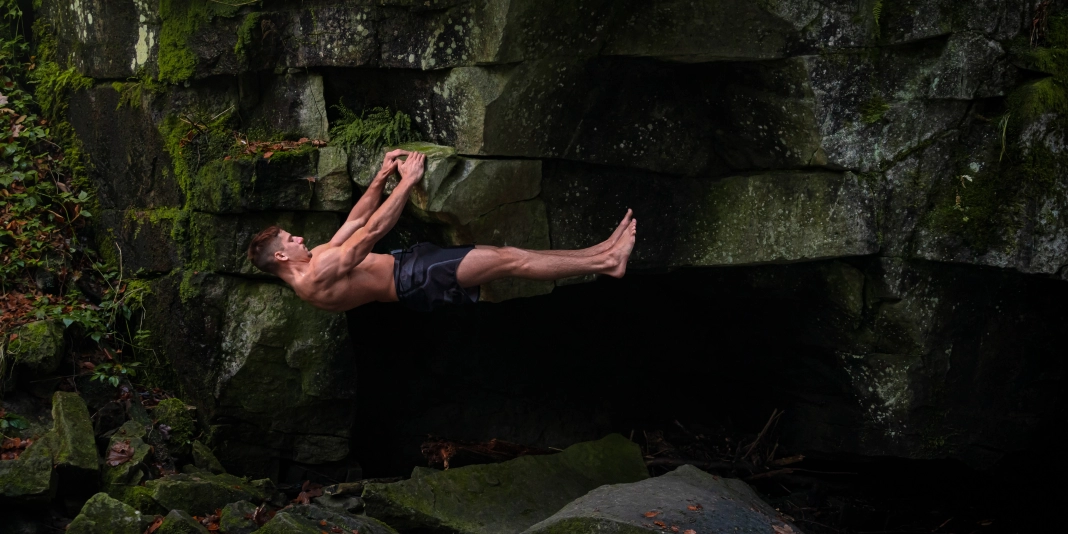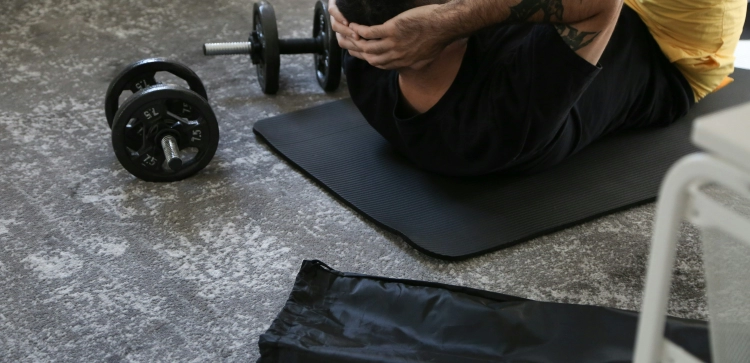Muscle-Building Effects Of Bouldering

While the goal of bouldering may not be to build a massively powerful and muscluar physic, it does do wonders for the body in terms of raw power and strength.
Look to the pinnacle of climbing achievement, and you'll find elite climbers whose strength seems paradoxical when compared to their size. The world's best climbers exhibit astonishing feats of power, yet they're not the bulkiest individuals
In this article we will understand the impact bouldering can have on a climbers strength and muscles, and how the sport produces some of the strongest athletes in the world in comparison to other, more muscular atheltes from other fields.
- How Bouldering Builds Muscle
- The Science Behind Lean Muscle Sculpting
- The Paradox: Climbers' Strength Vs. Size
- The Role Of Functional Fitness
- The Science Behind Muscle Growth
- The Lean Muscle Sculptor: How Bouldering Achieves Aesthetic Balance
- Embracing The Climber's Journey
- Conclusion
- Commonly Asked Questions
How Bouldering Builds Muscle
Bouldering is like a dance for your muscles. When you climb, every move engages muscles from your fingertips to your toes. Those dynamic shifts, the holds we carefully control, and those powerful jumps—they all bring different muscles into action. It's a full-body workout that's right up there with traditional strength training, just from a completely different angle.
Bouldering has an impact on muscle growth that covers both slow-twitch and fast-twitch muscle fibers. Slow-twitch fibers are the ones that can keep going even during prolonged efforts, boosting endurance. On the other hand, the fast-twitch fibers are responsible for those explosive movements and the extra power. This balanced engagement is at the core of how bouldering helps build muscles.
The Science Behind Lean Muscle Sculpting
Contrary to the bulk-centric image associated with traditional weightlifting, bouldering sculpts lean muscle that blends aesthetics with function. The body's response to bouldering involves hypertrophy—a controlled increase in muscle size that emphasizes strength without excessive mass.
The compound, multi-dimensional nature of climbing engages stabilizing muscles that are often overlooked in conventional workouts. These supportive muscles not only bolster climbing performance but contribute to a well-rounded, toned physique that embodies functional strength.
The Paradox: Climbers' Strength vs. Size
Look to the pinnacle of climbing achievement, and you'll find elite climbers whose strength seems paradoxical when compared to their size. The world's best climbers exhibit astonishing feats of power, yet they're not the bulkiest individuals. The secret lies in the ratio of strength to body weight.
Climbers prioritize their power-to-weight ratio, a key metric in the sport, rather than muscle size. Shedding unnecessary mass while amplifying strength allows climbers to perform awe-inspiring moves with precision. This pairing of muscular capability and a lean physique is the optimal setup for climbing performance.
The Role of Functional Fitness
Beyond mere muscle size, bouldering crafts functional fitness that translates to real-world capabilities. Climbers develop proprioception—the keen sense of body awareness—enhancing balance, coordination, and agility. These attributes extend beyond the climbing wall, empowering climbers in everyday activities.
The way bouldering brings functional strength into our daily lives shows how transformative it can be. It shapes individuals who aren't just strong, but also skilled at handling the physical demands of the world around them.
The Science Behind Muscle Growth
To understand the impressive muscle-building impact of bouldering, it's essential to explore the intricate physiology of the activity. When a climber engages with a route, whether vertical or overhanging, muscles across the body harmonize to execute precise movements. The core, forearms, biceps, triceps, shoulders, and back form a symphony of strength as climbers navigate holds, crimps, slopers, and jugs.
Each hold requires a calculated distribution of weight and force. Slow-twitch muscles provide the endurance needed for sustained efforts, allowing climbers to maintain positions during challenging sequences. On the other hand, fast-twitch muscles unleash explosive power, enabling climbers to execute dynamic movements, leaps, and controlled descents.
The constant tension and release of muscles during climbing, combined with the body's adaptation to varying terrains, lead to microtrauma within muscle fibers. These microtraumas initiate the body's repair process, fostering muscle growth and increased strength over time. It's a delicate dance of exertion, recovery, and growth that forms the foundation of bouldering's muscle-building prowess.
The Lean Muscle Sculptor: How Bouldering Achieves Aesthetic Balance
The allure of bouldering lies not only in its capacity for strength development but also in the artistry of muscle sculpting. Unlike traditional weightlifting, which may prioritize size, bouldering emphasizes a lean and functional aesthetic. Climbers exhibit a balanced physique that marries power with agility—a testament to the finesse of their sport.
The focus on functional strength is exemplified by the intricate footwork and precise body positioning required in climbing. These nuances ensure that climbers utilize muscles efficiently, avoiding unnecessary strain while executing complex movements. The outcome is a well-sculpted body that effortlessly blends power, endurance, and grace.
Embracing the Climber's Journey
Bouldering transcends the realms of physical exertion; it becomes a journey of self-discovery, where the body and mind collaborate to conquer vertical challenges. As climbers push their limits, they uncover the latent strength within, harnessing it to scale heights that once seemed insurmountable.
The sculpted physique borne of bouldering is a testament to the fusion of dedication, technique, and passion. It's a canvas where muscles are not merely built but meticulously sculpted, each hold an artist's stroke contributing to a masterpiece of functional prowess.
So, whether you're a novice or a seasoned climber, remember that each ascent fuels not only physical growth but also a profound sense of accomplishment. Bouldering's gift is not just a robust body; it's an unwavering belief in the boundless potential that resides within every climber.
Conclusion
Bouldering isn't just about getting in shape—it's like an art that hones your body, combining strength, agility, and grace. But there's more to it than that. Bouldering changes how we see strength. It's not just about muscles; it's about being fit in a practical way, beyond just climbing walls.
As you make your way through the world of bouldering, enjoy the mix of building muscle and gaining lean power. It's what helps climbers reach extraordinary levels of skill. Climbers, they're a special bunch. They work hard, getting their bodies and minds in sync, so they can tackle challenges both on and off the climbing wall.
In a world where everyone talks about big muscles, bouldering offers a fresh perspective. Those who love bouldering show that real strength is more than just being strong—it's about being adaptable, having control, and finding power in movement. From your fingers to your toes, bouldering gives climbers the strength to beat obstacles, the guts to keep pushing, and the toughness to overcome anything.
Commonly Asked Questions
How does bouldering alone lead to significant muscle gains?
Bouldering is a potent muscle-building activity that engages a wide range of muscle groups through dynamic movements and controlled holds. This stimulation leads to muscle hypertrophy and growth.
Why are climbers strong, yet not as bulky as traditional weightlifters?
Climbers prioritize functional strength over sheer muscle size. Bouldering's focus on power-to-weight ratio ensures that climbers develop lean, powerful muscles ideal for their sport.
How does bouldering foster functional strength beyond the climbing wall?
Bouldering enhances functional strength beyond the climbing wall by involving various muscle groups in dynamic movements and controlled holds. This not only improves climbing abilities but also translates into better balance, coordination, and agility for everyday activities.












